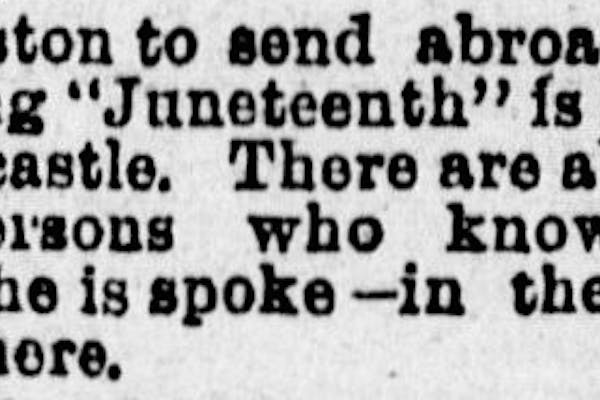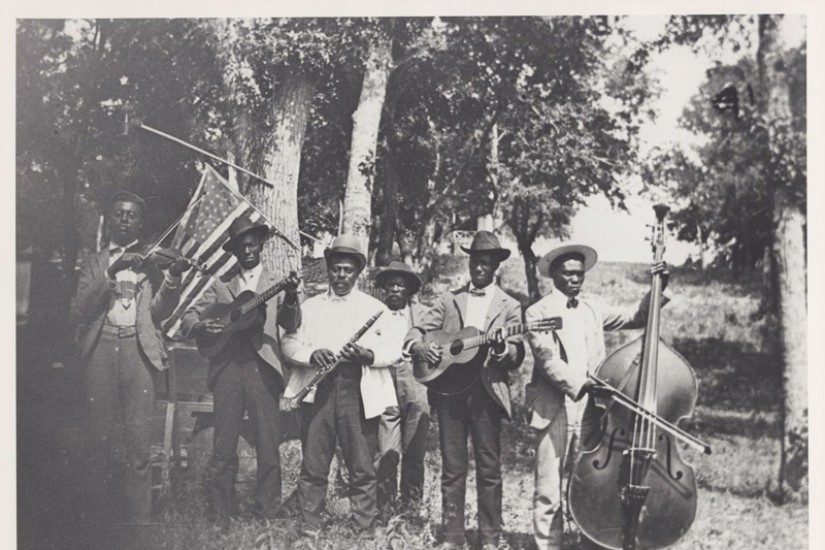Just like for the Fourth of July, food and drink have long been central to Juneteenth celebrations, barbecue being a common cuisine served at picnics and parades. Barbecue historian Robert Moss noted the connection in his book Barbecue: The History of an American Institution. “One constant was the barbecue pit, which always took the central place at the festivities.” An account published in 1871 in The Reformer, an Austin newspaper, announced a celebration “to take place at the barbecue grounds.” In Hempstead in 1886 “a big barbecue dinner was spread for the multitude,” and three years later in Cleburne there was a parade, where patrons “met at the grove to enjoy a basket dinner and barbecue.” Preparations for the 1892 celebration in Austin included barbecue according to the Daily Statesman, an occasion where “the preparation and sharing of food was the main attraction. In keeping with convention men barbecued the meat, and women prepared the remainder of the food.” In Brenham, just after the turn of the century, it was reported that “a large crowd of negroes met at Oak Grove Thursday and celebrated the Juneteenth. A big barbecue was prepared and some two hundred joined in the slaughter of meat.”
In the previous report from Brenham, notice the early usage of “Juneteenth.” That particular term didn’t become the common usage for decades after the first Emancipation Day celebrations, and in fact, the first printed use of it I could find was in the Galveston Daily News on May 22, 1890 (this was a reprint of the black-owned Beaumont Recorder, and even then it was used in quotations).

Barbecue wasn’t the only item on the menu. The middle of June being the beginning of watermelon season in Texas, that also found a spot at the table. The Galveston Daily News reported on celebrations across the state in 1883 including one in San Antonio where “twenty-three wagons loaded with watermelons … were destroyed with marvelous rapidity.” By 1933, the menu had been cemented per the Dallas Morning News. “Watermelon, barbecue and red lemonade will be consumed in quantity.”
Red food and drink have been associated with African and later African American foodways. As food writer Michael Twitty explains on his blog Afroculinaria, “The practice of eating red foods—red cake, barbecue, punch and fruit—may owe its existence to the enslaved Yoruba and Kongo brought to Texas in the 19th century.” Accounts of drinking red lemonade or red soda water were generally mentioned in early accounts of Juneteenth. Big Red, first bottled in the thirties in Waco, then became the de facto red soda water for the African American community in Texas, especially for Juneteenth celebrations. The common connection between Big Red and Juneteenth, and Juneteenth and barbecue is partly credited with the ubiquity of Big Red at Texas barbecue joints.
